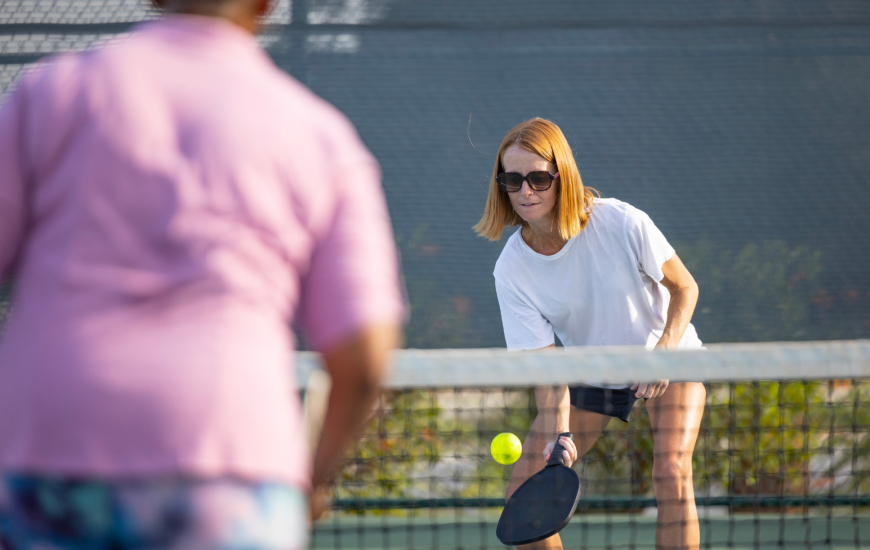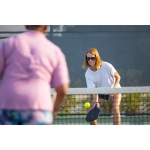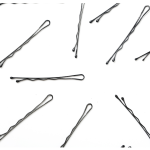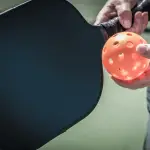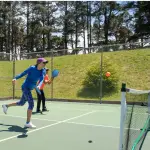You might think the dink shot is dead in this era of aggressive pickleball. But this is far from the truth as mastering the pickleball dink is still crucial for anyone looking to up their game. This delicate, accurate shot plays a pivotal role in dictating the game’s tempo, repositioning opponents, and setting up offensive plays. In this in-depth guide, we’ll explore the nuances of the pickleball dink, delving into the correct techniques, strategies, and practice drills to elevate your performance on the court.
Why the Pickleball Dink Matters
In the world of pickleball, dinking can make all the difference between an average player and an advanced one. A dink is a soft, controlled shot that is played just over the net, typically landing in the non-volley zone (also known as the kitchen). Mastering the art of dinking can significantly improve your overall pickleball game and provide you with a strategic edge over your opponents.
Dinks Create Offensive Opportunities
Dinking is an essential tool for moving your opponents out of their optimal court position. By placing dinks strategically, you can force your opponents to move forward and backward, as well as side to side, ultimately stretching their court coverage. This can create openings for more aggressive shots, such as smashes or volleys, when your opponents are out of position.
Dinks Disrupt Opponents’ Rhythm
One of the primary benefits of dinking is the ability to control the pace of the game. By employing a dink shot, you force your opponents to slow down and engage in a softer, more tactical rally. This tactic can be notably efficient when facing opponents who enjoy a fast-paced, aggressive style. By incorporating dinks into your game, you can effectively disrupt your opponents’ rhythm and enhance your likelihood of scoring points.
Minimizing Unforced Errors
A well-executed dink can minimize unforced errors during a rally. Since dinks are slower and more controlled shots, they provide a higher margin for error compared to powerful drives or slams. By incorporating dinking into your game, you can reduce the number of points lost due to errors, giving you a better chance of winning the match.
Dinks Build Pressure
Consistent dinking puts pressure on your opponents, causing them to make errors as they attempt to force the play. Capitalize on these mistakes by transitioning to an offensive position and exploiting their weaknesses.
Enhancing Strategy and Patience
Dinking rallies require patience and strategic thinking. By engaging in dink battles, you’ll develop your ability to anticipate your opponents’ moves and plan your shots accordingly. This improved strategic thinking can translate to other aspects of your pickleball game, making you a more well-rounded and formidable player.
Developing Soft Touch and Control
Mastering the dink requires a soft touch and excellent control. As you practice and refine your dinking skills, you’ll naturally develop better control over your shots, which can benefit your overall game. Improved touch and control will allow you to place shots more accurately, making it harder for your opponents to anticipate and return them.
Basics of the Pickleball Dink Technique
To see the dink in action, check out my friend Tony Roig’s dinking video.
• Use a continental grip: The continental grip allows for optimal control and adaptability. Grasp the paddle as if shaking hands with it, maintaining a relaxed grip like you are holding a pencil.
• Bend your knees and stay low: Adopting a low stance with bent knees ensures a stable base, enhancing shot control. This position also aids in keeping the ball low over the net.
• Move with the ball: As the ball approaches, step towards it, synchronizing your body movement with your paddle. This guarantees proper positioning and control during the shot execution.
• Swing from your shoulder, not your wrist: Employ a compact swing, moving your paddle forward with a subtle upward motion. Maintain a firm wrist, refraining from flicking it during the shot.
• Aim for a low trajectory: To make it challenging for your opponent to attack, keep the ball low over the net. Target a trajectory that barely clears the net and lands near the no-volley zone (commonly known as the kitchen).
Advanced Pickleball Dink Techniques
Crosscourt dink: Instead of hitting the ball straight ahead, aim for the diagonally opposite corner of the NVZ. This forces your opponent to move laterally, covering more ground, and increasing the chances of them making a mistake.
Inside-out dink: This strategy involves striking the ball with a subtle sidespin, causing it to bounce away from your opponent. This can be particularly effective against players with strong forehand or backhand skills, as it requires them to adjust their positioning.
Backspin dink: By imparting backspin on the ball, you can make it more challenging for your opponent to play an aggressive shot. The backspin causes the ball to bounce lower and stay nearer to the net, limiting your opponent’s offensive options.
Use deception: Use body and paddle positioning to deceive your opponent about the direction and depth of your dink. This tactic can create confusion and force your opponent into making errors.
Control the height of your dink: Practice hitting dinks at different heights, so you have more options to choose from during a match. A longer dink just beyond the kitchen line might force your opponent to hit a more defensive shot, because they are pushed back in the court.
Drills to Improve Your Pickleball Dink Skills
Dink Straight Across
This fundamental drill focuses on touch and control. Stand at the kitchen line opposite your partner, with both players positioned in the middle of the court. Dink the ball back and forth, aiming to maintain a consistent rally. This exercise will help you develop a feel for the proper contact and trajectory needed to keep the ball in play.
Crosscourt Dinking Drill
In this drill, you and your partner will practice dinking diagonally across the court. Start in the right-hand service box and have your partner stand in the opposite left-hand service box. Take turns hitting dinks from one corner of the kitchen to the other, focusing on accuracy and consistency. This drill helps develop your ability to hit angled dink shots, which can be particularly effective in moving your opponents out of position during a game.
Dink Around the World
This dynamic drill helps improve control, accuracy, and anticipation. One player remains stationary at one side of the kitchen line, while the other player moves around the net, hitting dinks from different positions. The stationary player must react and adjust their dinks accordingly. After a set number of shots, switch roles and repeat the drill.
Dinking Ladder Drill
This drill is designed to help you improve your dinking skills under pressure. With a partner, begin by dinking back and forth at a slow pace. After a set number of successful dinks (for example, 5), both players take a step back, increasing the distance between them. Continue dinking back and forth, taking a step back after each set of successful dinks. If you miss a shot, move back up to the kitchen line and restart the drill.
Dinking with Movement Drill
To simulate the movement required during a real game, practice dinking while moving laterally along the kitchen line. Start at one end of the kitchen line and hit a dink shot to your partner, who should be positioned on the opposite side of the net. After hitting the dink, shuffle sideways to the other end of the kitchen line. Your partner will return the dink, and you will hit another dink shot from your new position. Continue this pattern, moving back and forth along the kitchen line while maintaining control and precision in your dinking.
Common Dinking Mistakes and How to Avoid Them
Hitting the ball too high
One of the most common dinking errors is hitting the ball too high, allowing your opponent to attack with a powerful volley. To avoid this mistake, focus on keeping your dink shots low, ideally just clearing the net. This will make it more difficult for your opponents to return with an aggressive shot.
Tip: Practice hitting low dinks by aiming for a target slightly above the net. Over time, you’ll develop the muscle memory required to consistently hit low dink shots.
Poor ball placement
Another common mistake is hitting dinks without a clear purpose or strategy. Aimlessly hitting dinks can give your opponents the upper hand, as they can easily predict and return your shots.
Tip: Be intentional with your dink placement. Try to hit the ball to your opponent’s backhand or move them side-to-side, forcing them to cover more ground and potentially exposing weaknesses in their game.
Inconsistent contact
Inconsistent contact with the ball can lead to weak, inaccurate dinks that are easily exploited by your opponents. This often stems from improper technique or a lack of focus.
Tip: Pay attention to your paddle’s angle, your grip, and your follow-through when dinking. Maintain a consistent technique and keep your eyes on the ball to ensure solid contact with each shot.
Neglecting footwork
Many players underestimate the importance of footwork when dinking, leading to off-balance shots and a reduced ability to react to their opponent’s returns. Be sure to stay parallel to the kitchen line so you are avoiding the cross over step.
Tip: Work on maintaining proper footwork during dink rallies by staying on the balls of your feet, keeping your knees bent, and staying ready to move in any direction. This will help you maintain balance, control, and quickness on the court.
Rushing the shot
Attempting to hit a dink too quickly can result in a lack of control and accuracy. Players who rush their dinks often struggle to maintain a soft touch, leading to errant shots that are easily capitalized upon by their opponents.
Tip: Be patient and take your time when executing a dink shot. Allow the ball to drop to a comfortable height before making contact, and use a gentle, controlled swing to ensure a soft touch.
Failing to anticipate
A lack of anticipation can make it difficult to react to your opponent’s dink shots effectively. Players who struggle with anticipation often find themselves out of position and unable to return dinks accurately.
Tip: Focus on reading your opponent’s body language and paddle position to predict where they will hit the ball. By anticipating their shots, you can be better prepared to respond with a well-placed dink of your own.
Analyzing the Dinking Game of Top Pickleball Players
Mixing up dink placement
When pros dink, they understand the importance of keeping their opponents guessing, and they use dinks to create uncertainty and exploit weaknesses. By varying dink placement – hitting shots to their opponent’s backhand, forehand, or even targeting the middle of the court – they force their opponents to constantly adjust and cover more ground.
Tip: During your practice sessions, work on dinking to different areas of the court. Develop the ability to hit precise shots to your opponent’s backhand, forehand, or the middle, making it difficult for them to predict your next move.
Changing the pace and trajectory
Top players are adept at altering the pace and trajectory of their dinks, further disrupting their opponents’ rhythm. By mixing up the speed and arc of their dink shots, they can catch their opponents off guard and create openings for offensive plays.
Tip: Practice hitting dinks with different speeds and trajectories, focusing on maintaining control and accuracy. Experiment with adding topspin or backspin to your dinks to further enhance your shot variety.
Recognizing opportunities for aggressive play
Professionals know when to transition from dinking to a more aggressive style of play. By closely observing their opponents’ body language and court positioning, they can recognize when a weak or high dink presents an opportunity to attack with a decisive volley or groundstroke.
Tip: Develop your ability to read your opponents’ movements and weaknesses. Learn to identify when a poorly executed dink by your opponent offers a chance to switch from a defensive dinking strategy to an aggressive offensive attack.
Patience and composure
One of the hallmarks of professional pickleball players is their patience and composure during dink rallies. They understand that rushing a shot or trying to force a winning play can lead to errors. Instead, they wait for the right opportunity to present itself before making their move.
Tip: When engaged in a dink rally, maintain a calm and focused mindset. Focus on executing each shot with precision and control, and resist the urge to rush or force a point-winning play.
Strategic targeting of opponents
In doubles play, pros often target the weaker player or exploit a specific vulnerability in their opponents’ games. By consistently dinking to the weaker player or aiming for their known weaknesses, they can increase their chances of winning points and applying pressure.
Tip: Observe your opponents and identify their strengths and weaknesses. Use this information to inform your dinking strategy, aiming for the weaker player or exploiting specific vulnerabilities whenever possible.
Taking Your Pickleball Dinking Game to the Next Level
Mastering the soft touch
A crucial aspect of effective dinking is developing a soft touch. This allows you to hit controlled, precise shots that clear the net by just enough, making it difficult for your opponents to attack.
Tip: Practice hitting dinks using a relaxed grip and a gentle follow-through. Focus on making consistent, soft contact with the ball, and aim for a target just above the net. With repetition, you’ll develop the muscle memory needed for a consistently soft touch.
Expanding your dink shot variety
Adding variety to your dink shots can keep your opponents guessing and create openings in their defense. Experiment with different spins, trajectories, and angles to develop a diverse range of dink shots.
Tip: Incorporate topspin, backspin, and sidespin into your dink shots during practice sessions. Also, work on hitting dinks at various angles, such as cross-court, down the line, and short or deep in the court. This expanded repertoire will make you a more unpredictable and formidable opponent.
Improving your court positioning
Effective court positioning is critical in pickleball, particularly during dink rallies. By positioning yourself correctly, you can cover more ground, react to your opponent’s shots more effectively, and set up offensive opportunities.
Tip: Focus on maintaining a balanced, athletic stance with knees bent and feet shoulder-width apart when dinking. Stay on the balls of your feet, ready to move in any direction, and be prepared to quickly close the gap to the net if an aggressive shot presents itself.
Anticipating your opponent’s shots
Being able to anticipate your opponent’s shots can take your game to the next level and give you a significant advantage during dink rallies. By reading their body language, paddle position, and court positioning, you can predict their shot selection and be better prepared to respond.
Tip: Study your opponents during warm-ups and early points in the match. Take note of their tendencies, strengths, and weaknesses, and use this information to anticipate their dink shots during rallies.
Developing mental toughness
Mental toughness is a critical component of successful dinking. Maintaining focus, composure, and patience during long dink rallies can be the difference between winning and losing crucial points.
Tip: Practice mindfulness techniques, such as deep breathing and visualization, to help you stay calm and focused during high-pressure dink rallies. Develop a pre-shot routine to help you maintain consistency and control in your dinking game.
Conclusion
Mastering the art of the pickleball dink is a critical skill for players looking to improve their game and gain a competitive edge. By focusing on proper technique, avoiding common mistakes, and practicing drills and strategies used by professionals, you’ll be well on your way to becoming a dinking expert.

